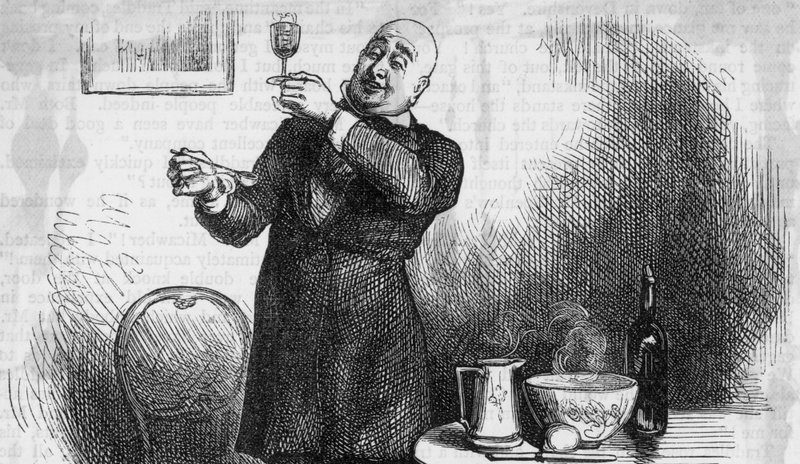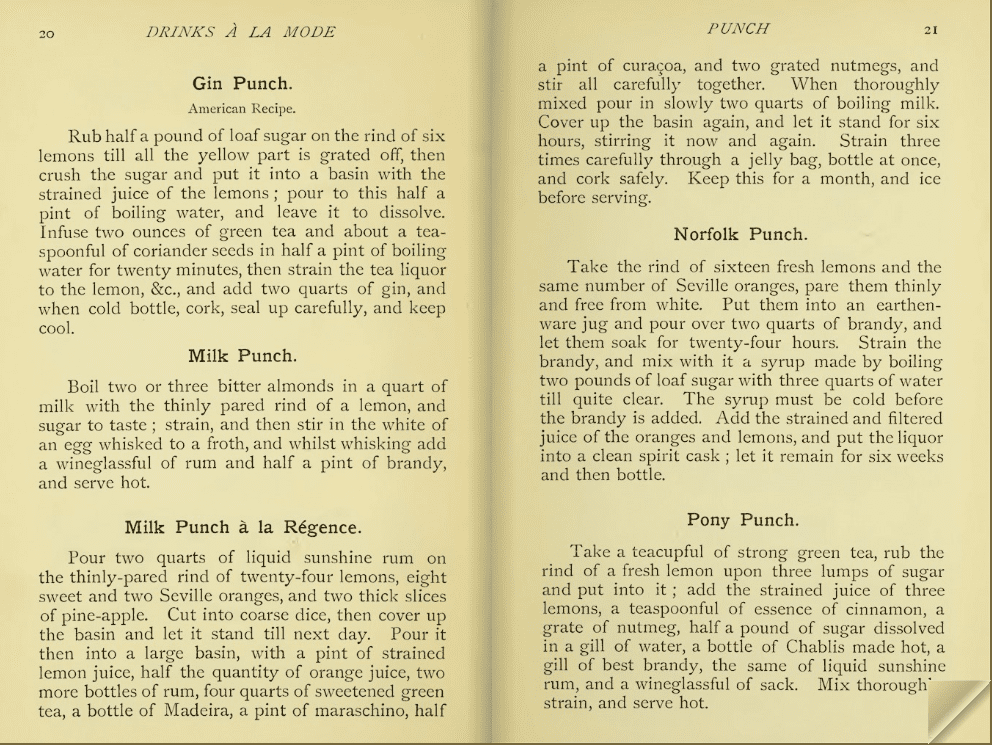Welcome to Our Summer Interns!
Meet Grayson and Grace—two of our outstanding summer interns at the Ohio History Connection!
As we spend more time at home these days, there seems to have been a surge in folks trying new recipes and getting creative in the kitchen. You’ve probably noticed an uptick in banana bread and dalgona (or whipped) coffee photos and videos popping up all over social media.
May we make a suggestion for your next kitchen adventure? Historic cocktails! Sip the same drink as the Victorians or imbibe in the concoctions around during Prohibition.

Mr. Micawber, from Charles Dickens’ David Copperfield, raises a glass near a punch bowl of lemon, sugar and spirits that made Micawber’s face shine “as if it had been varnished all over.” Alcoholic punches were very popular in Dickens’ time.–Getty Images
How does one find historically accurate cocktails recipes? Well, it’s not always easy. And the recipes aren’t always appetizing by today’s standards. For example, we see “Milk Punch” featured in several historic bar manuals. One recipe calls for bitter almonds to be boiled in milk with lemon rinds, then you froth an egg white into the mixture and add rum and brandy. We’ll pass on this one!
 Recipes from Drinks A La Mode by Harriet Ann de Salis, 1891
Recipes from Drinks A La Mode by Harriet Ann de Salis, 1891
We have a series of programs at the Ohio History Center called Pleasures of the Cup where guests try historic cocktails, so our program staff are always on the hunt for historic bar manuals and recipe books.
Some of the better known bar manuals from days past are How to Mix Drinks: Or, A Bon-vivant’s Companion by Jerry Thomas from 1862, Harry Johnson’s 1882 New and Improved Bartender’s Manual and a Guide for Hotels and Restaurants and Cooling Cups and Dainty Drinks by William Terrington. Each of these have an extensive list of cocktails as well as information on different types of wine, ales and liquors. They even offer background on how to manage a beer cellar, and how to choose glassware.
In a lot of these books, you’ll find everything from countless punch recipes to still popular cocktails, like the mint julep and the Manhattan. You’ll also find gems that most people wouldn’t dream of making today. Toledo Punch, for example, calls for TWO POUNDS of sugar, six bottles of champagne, four bottles of wine and two bottles of French claret!
Here’s one that we think fits better with our modern palate, and it’s fairly simple. The Boulevardier appeared during the Prohibition era and comes from the 1927 bar guide, Barflies and Cocktails.
Ingredients:
2 oz bourbon or rye whiskey
1 oz Campari
1 oz sweet vermouth
1 orange peel, for garnish
Method: Add ingredients to a mixing glass and top with ice. Stir until fragrant, about 15–20 seconds. Strain cocktail into a chilled martini glass or other stemmed glassware. Garnish with orange peel.
Whether you want to see how the classics were originally made or are itching to try something a little different, historic cocktail books have you covered.
Check out the recipes we’ve included and let us know what you think. Cheers!
Do you have a story to share? Right now, our team is documenting how Ohioans are experiencing today’s historic pandemic. As Ohio’s public history organization, the stories you share with us will help us understand the day-to-day impacts of COVID-19.